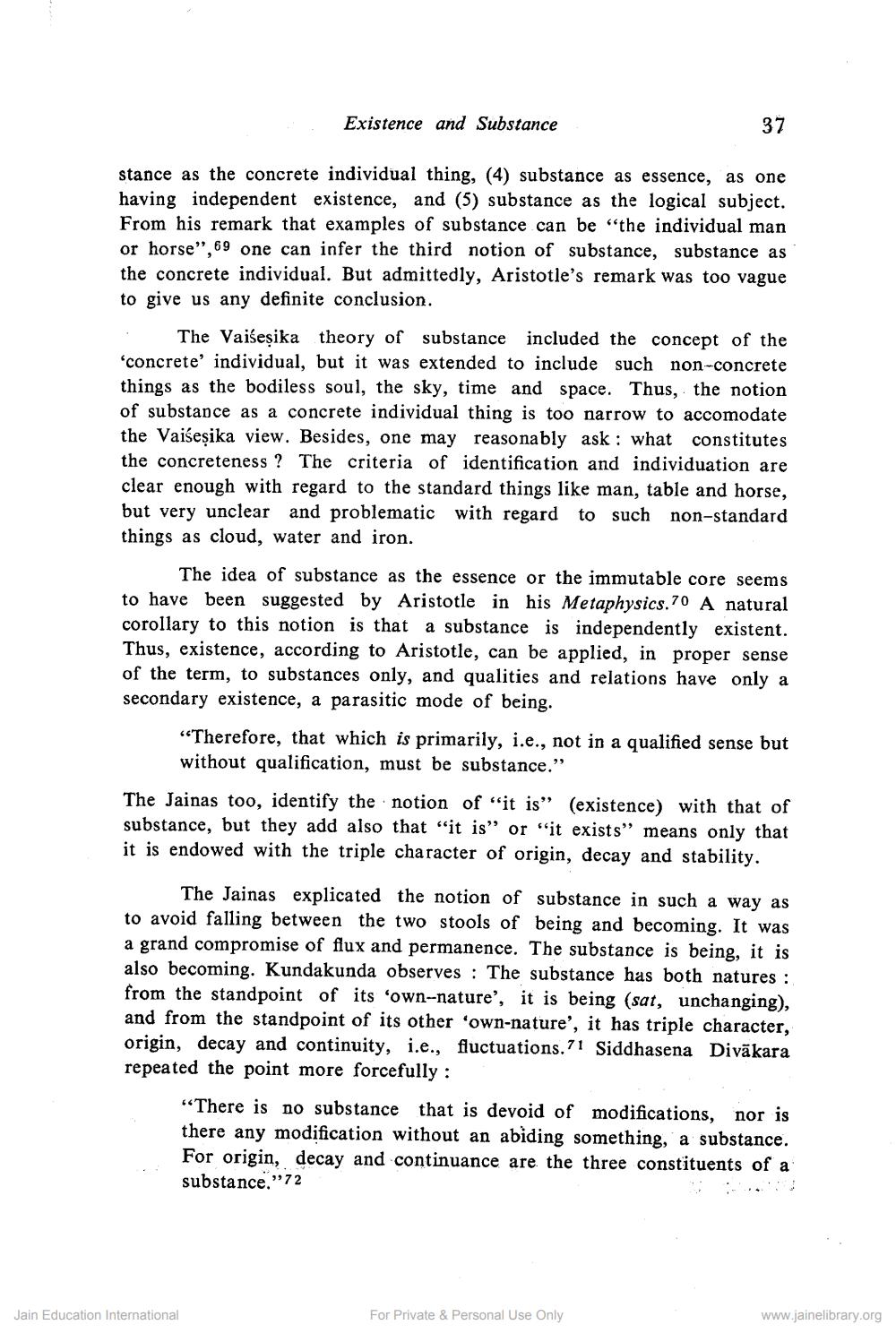________________
Existence and Substance
37
stance as the concrete individual thing, (4) substance as essence, as one having independent existence, and (5) substance as the logical subject. From his remark that examples of substance can be “the individual man or horse", 69 one can infer the third notion of substance, substance as the concrete individual. But admittedly, Aristotle's remark was too vague to give us any definite conclusion.
: The Vaisesika theory of substance included the concept of the 'concrete' individual, but it was extended to include such non-concrete things as the bodiless soul, the sky, time and space. Thus, the notion of substance as a concrete individual thing is too narrow to accomodate the Vaiseșika view. Besides, one may reasonably ask : what constitutes the concreteness? The criteria of identification and individuation are clear enough with regard to the standard things like man, table and horse, but very unclear and problematic with regard to such non-standard things as cloud, water and iron.
The idea of substance as the essence or the immutable core seems to have been suggested by Aristotle in his Metaphysics.70 A natural corollary to this notion is that a substance is independently existent. Thus, existence, according to Aristotle, can be applied, in proper sense of the term, to substances only, and qualities and relations have only a secondary existence, a parasitic mode of being.
"Therefore, that which is primarily, i.e., not in a qualified sense but without qualification, must be substance."
The Jainas too, identify the notion of “it is" (existence) with that of substance, but they add also that "it is" or "it exists" means only that it is endowed with the triple character of origin, decay and stability.
The Jainas explicated the notion of substance in such a way as to avoid falling between the two stools of being and becoming. It was a grand compromise of flux and permanence. The substance is being, it is also becoming. Kundakunda observes : The substance has both natures: from the standpoint of its own--nature', it is being (sat, unchanging), and from the standpoint of its other 'own-nature', it has triple character, origin, decay and continuity, i.e., fluctuations.71 Siddhasena Divākara repeated the point more forcefully :
“There is no substance that is devoid of modifications, nor is there any modification without an abiding something, a substance. For origin, decay and continuance are the three constituents of a substance.”72
Jain Education International
For Private & Personal Use Only
www.jainelibrary.org




